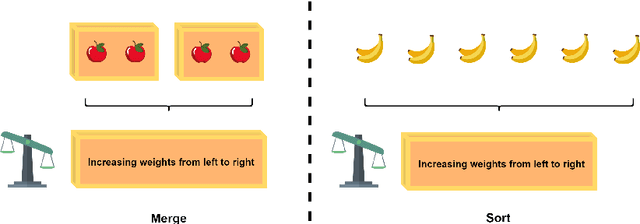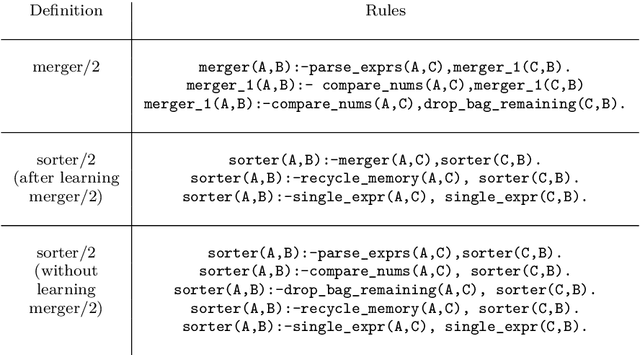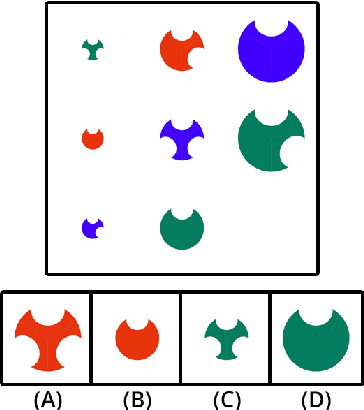Lun Ai
Active learning of digenic functions with boolean matrix logic programming
Aug 19, 2024Abstract:We apply logic-based machine learning techniques to facilitate cellular engineering and drive biological discovery, based on comprehensive databases of metabolic processes called genome-scale metabolic network models (GEMs). Predicted host behaviours are not always correctly described by GEMs. Learning the intricate genetic interactions within GEMs presents computational and empirical challenges. To address these, we describe a novel approach called Boolean Matrix Logic Programming (BMLP) by leveraging boolean matrices to evaluate large logic programs. We introduce a new system, $BMLP_{active}$, which efficiently explores the genomic hypothesis space by guiding informative experimentation through active learning. In contrast to sub-symbolic methods, $BMLP_{active}$ encodes a state-of-the-art GEM of a widely accepted bacterial host in an interpretable and logical representation using datalog logic programs. Notably, $BMLP_{active}$ can successfully learn the interaction between a gene pair with fewer training examples than random experimentation, overcoming the increase in experimental design space. $BMLP_{active}$ enables rapid optimisation of metabolic models and offers a realistic approach to a self-driving lab for microbial engineering.
Boolean Matrix Logic Programming
Aug 19, 2024Abstract:We describe a datalog query evaluation approach based on efficient and composable boolean matrix manipulation modules. We first define an overarching problem, Boolean Matrix Logic Programming (BMLP), which uses boolean matrices as an alternative computation to evaluate datalog programs. We develop two novel BMLP modules for bottom-up inferences on linear dyadic recursive datalog programs, and show how additional modules can extend this capability to compute both linear and non-linear recursive datalog programs of arity two. Our empirical results demonstrate that these modules outperform general-purpose and specialised systems by factors of 30x and 9x, respectively, when evaluating large programs with millions of facts. This boolean matrix approach significantly enhances the efficiency of datalog querying to support logic programming techniques.
Simulating Petri nets with Boolean Matrix Logic Programming
May 18, 2024Abstract:Recent attention to relational knowledge bases has sparked a demand for understanding how relations change between entities. Petri nets can represent knowledge structure and dynamically simulate interactions between entities, and thus they are well suited for achieving this goal. However, logic programs struggle to deal with extensive Petri nets due to the limitations of high-level symbol manipulations. To address this challenge, we introduce a novel approach called Boolean Matrix Logic Programming (BMLP), utilising boolean matrices as an alternative computation mechanism for Prolog to evaluate logic programs. Within this framework, we propose two novel BMLP algorithms for simulating a class of Petri nets known as elementary nets. This is done by transforming elementary nets into logically equivalent datalog programs. We demonstrate empirically that BMLP algorithms can evaluate these programs 40 times faster than tabled B-Prolog, SWI-Prolog, XSB-Prolog and Clingo. Our work enables the efficient simulation of elementary nets using Prolog, expanding the scope of analysis, learning and verification of complex systems with logic programming techniques.
Boolean matrix logic programming for active learning of gene functions in genome-scale metabolic network models
May 10, 2024Abstract:Techniques to autonomously drive research have been prominent in Computational Scientific Discovery, while Synthetic Biology is a field of science that focuses on designing and constructing new biological systems for useful purposes. Here we seek to apply logic-based machine learning techniques to facilitate cellular engineering and drive biological discovery. Comprehensive databases of metabolic processes called genome-scale metabolic network models (GEMs) are often used to evaluate cellular engineering strategies to optimise target compound production. However, predicted host behaviours are not always correctly described by GEMs, often due to errors in the models. The task of learning the intricate genetic interactions within GEMs presents computational and empirical challenges. To address these, we describe a novel approach called Boolean Matrix Logic Programming (BMLP) by leveraging boolean matrices to evaluate large logic programs. We introduce a new system, $BMLP_{active}$, which efficiently explores the genomic hypothesis space by guiding informative experimentation through active learning. In contrast to sub-symbolic methods, $BMLP_{active}$ encodes a state-of-the-art GEM of a widely accepted bacterial host in an interpretable and logical representation using datalog logic programs. Notably, $BMLP_{active}$ can successfully learn the interaction between a gene pair with fewer training examples than random experimentation, overcoming the increase in experimental design space. $BMLP_{active}$ enables rapid optimisation of metabolic models to reliably engineer biological systems for producing useful compounds. It offers a realistic approach to creating a self-driving lab for microbial engineering.
Human Comprehensible Active Learning of Genome-Scale Metabolic Networks
Aug 31, 2023Abstract:An important application of Synthetic Biology is the engineering of the host cell system to yield useful products. However, an increase in the scale of the host system leads to huge design space and requires a large number of validation trials with high experimental costs. A comprehensible machine learning approach that efficiently explores the hypothesis space and guides experimental design is urgently needed for the Design-Build-Test-Learn (DBTL) cycle of the host cell system. We introduce a novel machine learning framework ILP-iML1515 based on Inductive Logic Programming (ILP) that performs abductive logical reasoning and actively learns from training examples. In contrast to numerical models, ILP-iML1515 is built on comprehensible logical representations of a genome-scale metabolic model and can update the model by learning new logical structures from auxotrophic mutant trials. The ILP-iML1515 framework 1) allows high-throughput simulations and 2) actively selects experiments that reduce the experimental cost of learning gene functions in comparison to randomly selected experiments.
Explanatory machine learning for sequential human teaching
May 20, 2022



Abstract:The topic of comprehensibility of machine-learned theories has recently drawn increasing attention. Inductive Logic Programming (ILP) uses logic programming to derive logic theories from small data based on abduction and induction techniques. Learned theories are represented in the form of rules as declarative descriptions of obtained knowledge. In earlier work, the authors provided the first evidence of a measurable increase in human comprehension based on machine-learned logic rules for simple classification tasks. In a later study, it was found that the presentation of machine-learned explanations to humans can produce both beneficial and harmful effects in the context of game learning. We continue our investigation of comprehensibility by examining the effects of the ordering of concept presentations on human comprehension. In this work, we examine the explanatory effects of curriculum order and the presence of machine-learned explanations for sequential problem-solving. We show that 1) there exist tasks A and B such that learning A before B has a better human comprehension with respect to learning B before A and 2) there exist tasks A and B such that the presence of explanations when learning A contributes to improved human comprehension when subsequently learning B. We propose a framework for the effects of sequential teaching on comprehension based on an existing definition of comprehensibility and provide evidence for support from data collected in human trials. Empirical results show that sequential teaching of concepts with increasing complexity a) has a beneficial effect on human comprehension and b) leads to human re-discovery of divide-and-conquer problem-solving strategies, and c) studying machine-learned explanations allows adaptations of human problem-solving strategy with better performance.
Beneficial and Harmful Explanatory Machine Learning
Sep 09, 2020



Abstract:Given the recent successes of Deep Learning in AI there has been increased interest in the role and need for explanations in machine learned theories. A distinct notion in this context is that of Michie's definition of Ultra-Strong Machine Learning (USML). USML is demonstrated by a measurable increase in human performance of a task following provision to the human of a symbolic machine learned theory for task performance. A recent paper demonstrates the beneficial effect of a machine learned logic theory for a classification task, yet no existing work has examined the potential harmfulness of machine's involvement in human learning. This paper investigates the explanatory effects of a machine learned theory in the context of simple two person games and proposes a framework for identifying the harmfulness of machine explanations based on the Cognitive Science literature. The approach involves a cognitive window consisting of two quantifiable bounds and it is supported by empirical evidence collected from human trials. Our quantitative and qualitative results indicate that human learning aided by a symbolic machine learned theory which satisfies a cognitive window has achieved significantly higher performance than human self learning. Results also demonstrate that human learning aided by a symbolic machine learned theory that fails to satisfy this window leads to significantly worse performance than unaided human learning.
 Add to Chrome
Add to Chrome Add to Firefox
Add to Firefox Add to Edge
Add to Edge